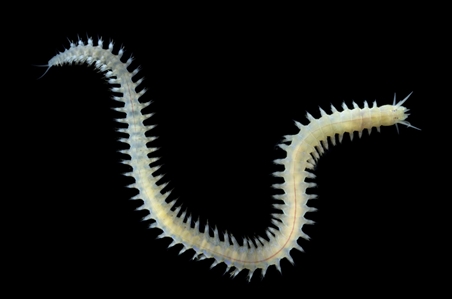General Description
In members of this genus paragnaths are generally present in most areas of the eversible pharynx; Area VI has cones only (no bars, as are present in Perinereis spp). Notochaetae are only spinigers (short-bladed chaetae are absent from the dorsal bundle of chaetae, and simple chaetae with fused articulation are absent ventrally). This species can be distinguished by Area VII-VIII paragnaths 5-30 and generally comprise a mixture of large and small paragnaths; paragnaths on Area IV include a conspicuous triangle of bars; a prechaetal notopodial lobe is present. Body up to about 3 cm long.
Habitat
Coastal bays and continental shelf areas, to depth of about 50 m.
Seagrass meadows
Soft substrates
Distribution guide
South-eastern Australia, or south-western Australia.
Species Group
Depth
Shore (0-1 m)
Shallow (1-30 m)
Deep ( > 30 m)
Water Column
Max Size
3 cm
Commercial Species
No
Species Code
MoV 1065
Identify
Conservation Status
- DSE Advisory List : Not listed
- EPBC Act 1999 : Not listed
- IUCN Red List : Not listed




